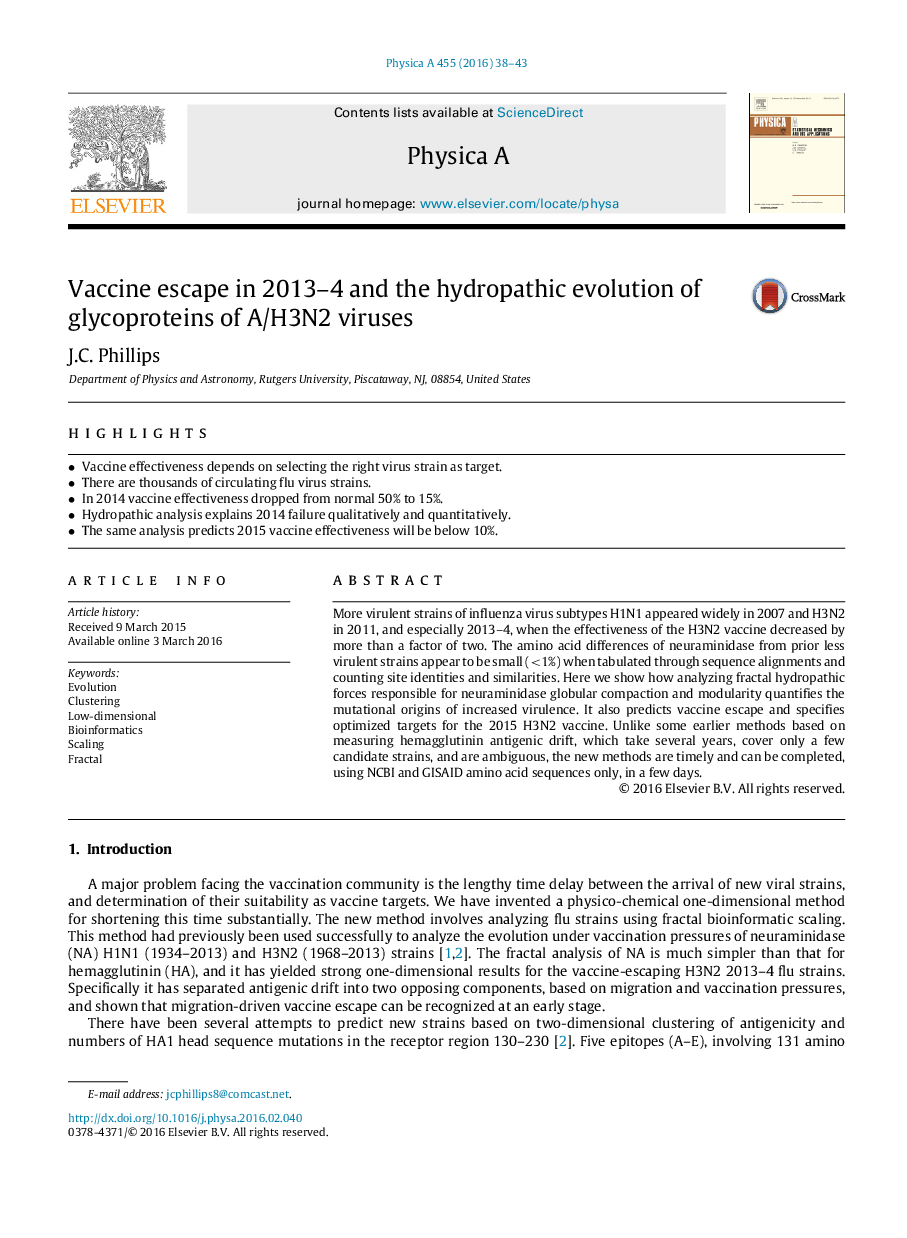| Article ID | Journal | Published Year | Pages | File Type |
|---|---|---|---|---|
| 976478 | Physica A: Statistical Mechanics and its Applications | 2016 | 6 Pages |
Abstract
More virulent strains of influenza virus subtypes H1N1 appeared widely in 2007 and H3N2 in 2011, and especially 2013-4, when the effectiveness of the H3N2 vaccine decreased by more than a factor of two. The amino acid differences of neuraminidase from prior less virulent strains appear to be small (<1%) when tabulated through sequence alignments and counting site identities and similarities. Here we show how analyzing fractal hydropathic forces responsible for neuraminidase globular compaction and modularity quantifies the mutational origins of increased virulence. It also predicts vaccine escape and specifies optimized targets for the 2015 H3N2 vaccine. Unlike some earlier methods based on measuring hemagglutinin antigenic drift, which take several years, cover only a few candidate strains, and are ambiguous, the new methods are timely and can be completed, using NCBI and GISAID amino acid sequences only, in a few days.
Related Topics
Physical Sciences and Engineering
Mathematics
Mathematical Physics
Authors
J.C. Phillips,
